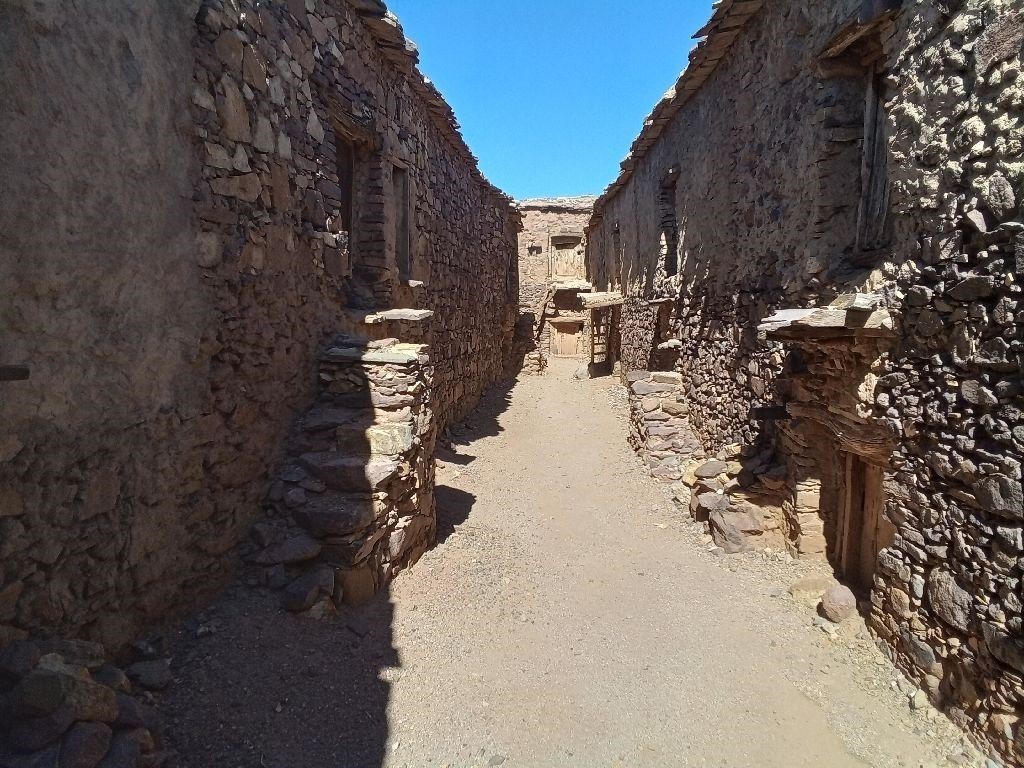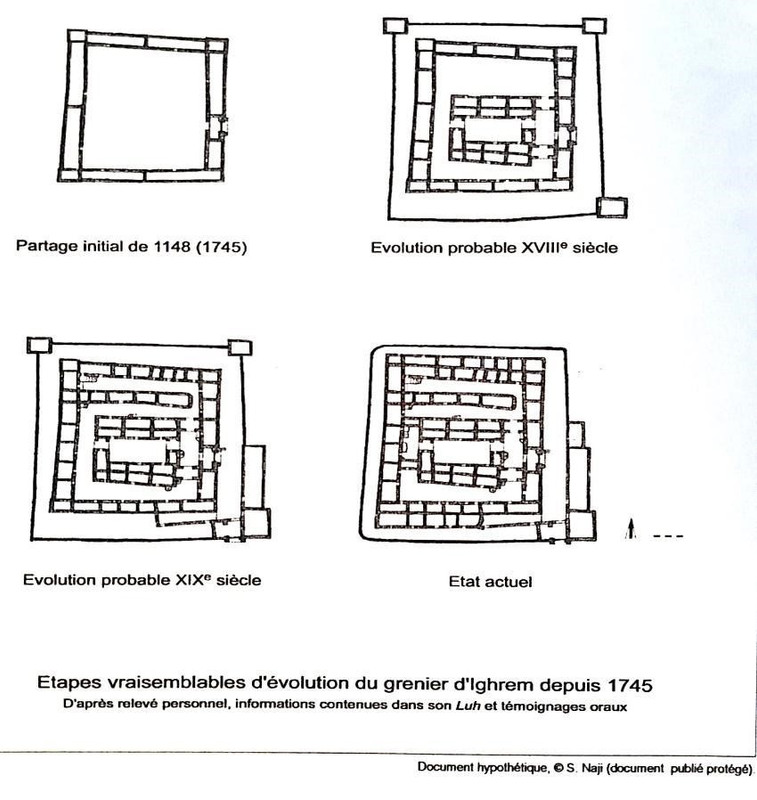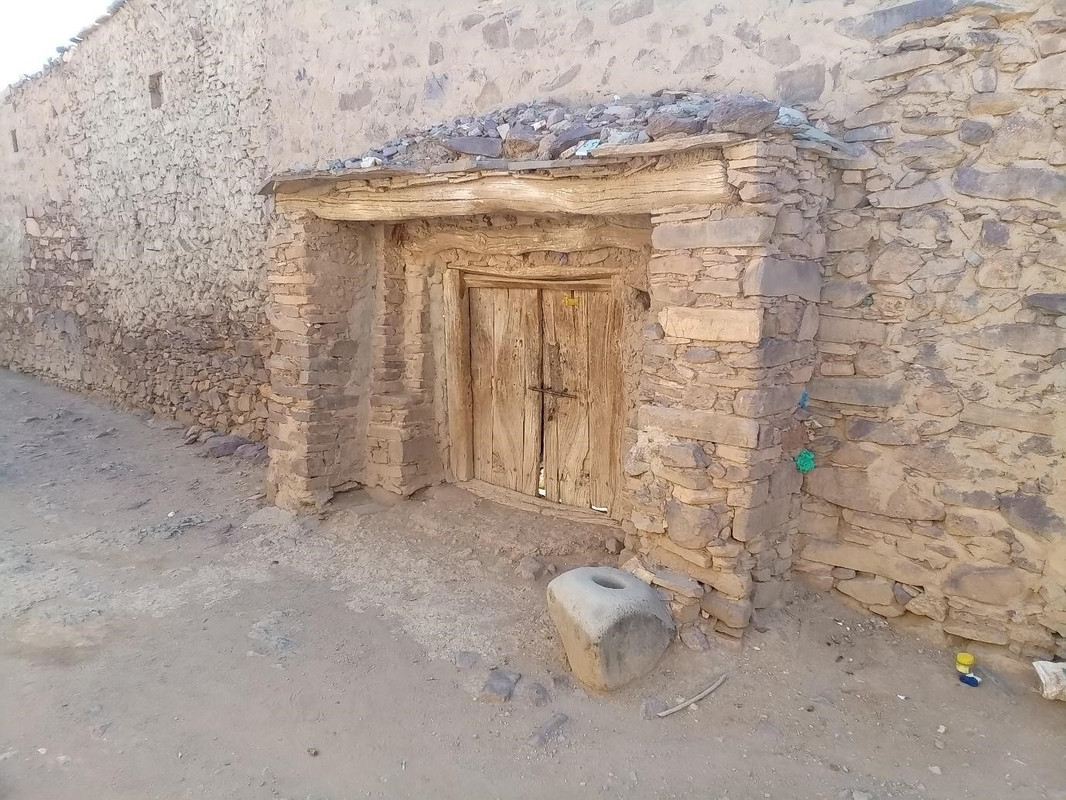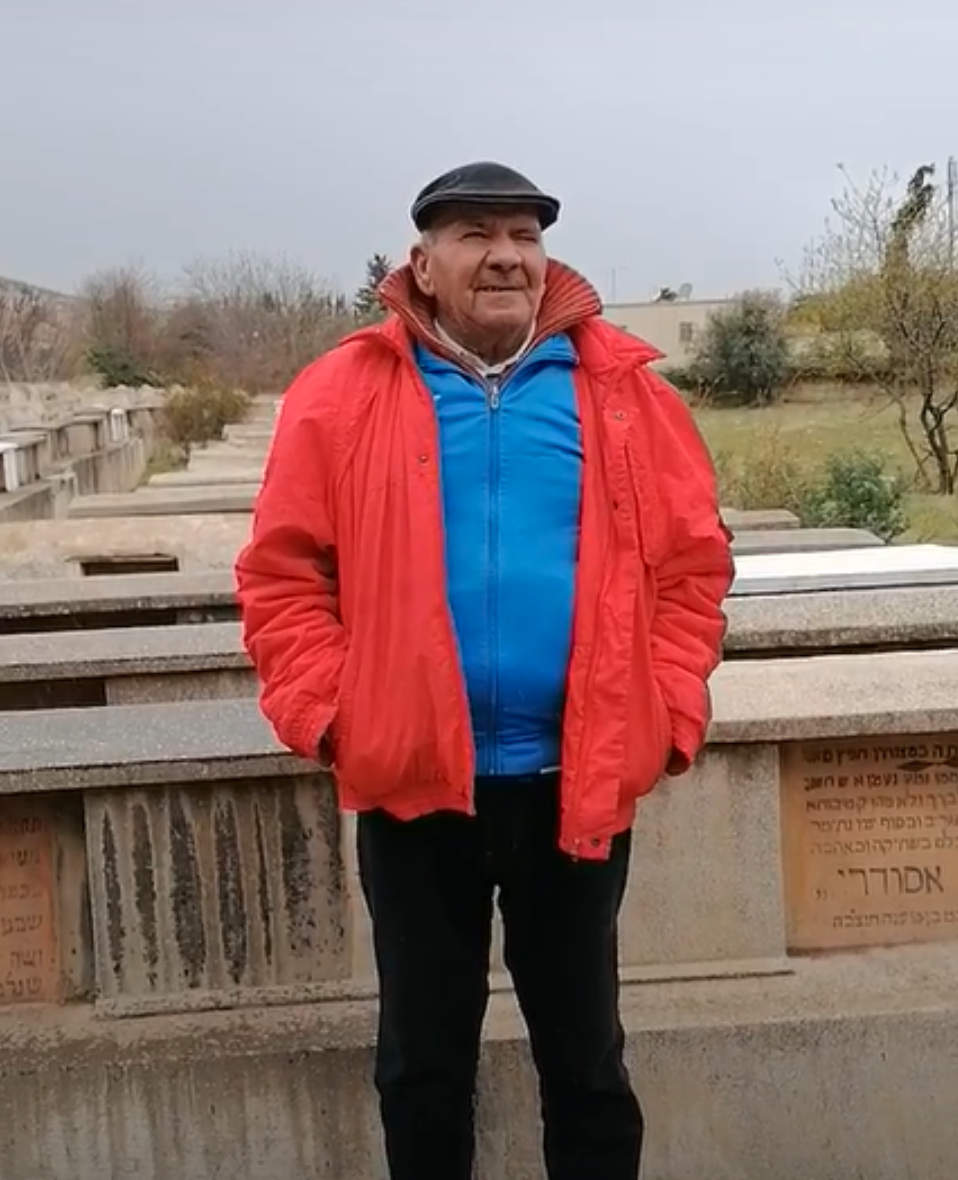Arabic Version
Heritage Month in Morocco – International Day for Monuments and Sites
Igoudar: The Collective Fortified Granaries of Ighram
By Jamal Maghiouzi, HAF-Dakira Cultural Coordinator
Ighrem, Taroudant province, Morocco
Igoudar, or collective granaries, though less-known, are unique heritage structures that have been an integral part of Amazigh tangible and intangible heritage in Morocco.

A corridor from Agadir n Ighram, Ighram rural commune, Taroudant. Photo: Jamal Maghiouzi/HAF
Agadir (plural Igoudar) literally translates to “wall” in English. In the eastern part of the High Atlas Mountains, the plains of Souss, and the Anti-Atlas, the term denotes a fortified storehouse. These centuries-old structures are found across North Africa, particularly in Morocco with around 550 structures scattered across central and southern Morocco, according to the Moroccan Ministry of Culture. In these collective granaries, the families store almonds, barley, title deeds, money, silver, jewelry, clothes, carpets and any other valuable items. The storerooms are used and managed by a number of families who belong to the same tribe that appoints Lamine (a guardian) to manage the institution according to a timetable. In addition, customary laws developed by the local people have managed to maintain the functioning of some of these institutions.
These ancient storehouses have evolved over time. Their origin dates back to the period of nomadic life, during which nomadic tribes in Southern Morocco used caves as storerooms to preserve food and valuable items. As some of the tribes started to adopt a more settled lifestyle in the 16th and 17th centuries, the caves became known as Igoudar, and the tribes have continued to use these structures ever since.

The evolution of Agadir n Ighrem since 1745. Photo screenshot: Salima Naji (Probable stages of the evolution of Igoudar Ighrem since 1745 according to a personal statement, information contained in Luh (boards) and testimonies)
Today, the institution persists in certain areas in Morocco. In the circle of Ighrem, there are 14 collective granaries of various shapes, including square, circular, and rectangular storehouses. They consist of 33 to 366 cells. In 1745, one of the clans of the Ida Oukensous tribe founded their Agadir in what is now known as the Municipality of Ighrem (previously, Ighrem village).

The main gate of Agadir n Ighram. Photo: Jamal Maghiouzi/HAF
The Agadir n Ighram is a square, two-floor building that covers a surface of more than 1,000 square metres. It contains 110 cells and other rooms with different functions. The villagers of Ighrem used local materials like stones, cane, clay, to build their collective granary. About six years ago, they built a wall and watchtowers in stones and concrete around the original building. This social institution has its own customary law which organizes the appointment of its guardian and guides its management. Its current guardian is a woman, and she allows the visitors to enter certain rooms, as there are other storing cells where the locals still keep a few of their valuable items.
In August 2022, the members of Ighrem village came together and organized a cultural festival called Rema, and they shared dinner in the square in front of their collective granary (called Asarag). Like other storehouses in southern Morocco, its rural Amazigh architecture attracts several renowned architects and researchers all of whom wrote research papers on these rural Moroccan monuments that are centralized in the Anti-Atlas Mountains. According to Salima Naji, who is an architect and anthropologist, Igoudar or Agadir is “an endangered heritage.” Based on a preliminary study that she conducted, 95 percent of them are no longer being maintained due to the lack of resources or interest of the local population.
Igoudar’s intricate architecture captures the Amazigh communities’ ancestral ingenuity. These ancient structures, which are considered to be the world’s oldest banking system, embody ancient communal practices that helped the population mediate tribal conflicts and withstand harsh climate conditions.
—
This article is part of the Heritage Month in Morocco campaign (April18 – May 18) that celebrates the Kingdom’s rich heritage, as part of the USAID Dakira Program, which is implemented by the High Atlas Foundation and its partners. The program aims to strengthen inter-religious and inter-ethnic solidarity through community efforts that preserve cultural heritage in Morocco.
The article was completed with the support of the United States Agency for International Development (USAID), and the High Atlas Foundation is solely responsible for its content, which does not necessarily reflect the views of USAID or the Government of the United States.







